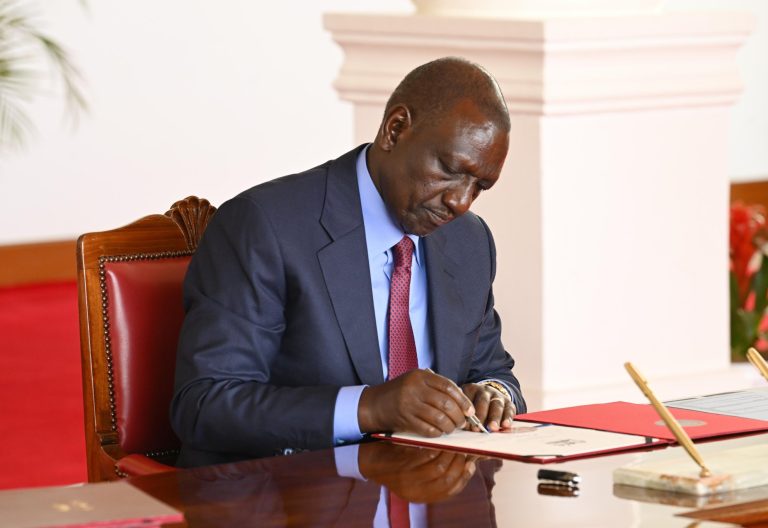Why Ruto might be one-term President
By Emeka-Mayaka Gekara, January 4, 2025Two episodes from the US politics can help us understand what is likely to be the fate of the Ruto administration, which is in denial. Most pundits on American cable news stuck their necks out saying Donald Trump could not win the 2016 US presidential election.
They predicted that Hillary Clinton would be elected the first US woman president. But confronted with poll data about his unlikely path to the White House, Trump responded with a refrain: “We have a silent majority.”
This is a demographic that may not shout from the rooftops about their candidate but are silently armed to deliver decisive victory in an election. This constituency does not appeal to the usual correctness that often characterises political messaging on polarising issues. They harbour raw appetites and anxieties — and there are many of them, potent but silent.
A majority of Americans who were unwilling publicly to admit they were supporting Trump used the privacy of the curtain of the ballot booth to make their voices heard.
Trump was vindicated when the “silent majority” elected him president.
But why did many pundits and pollsters think that Trump couldn’t win?
Writing in the Washington Post, James Hohmann, attributed the scenario to what he describes as “confirmation bias”. This is the tendency to interpret new evidence as confirmation of one’s existing theories.
According to Hohmann, many elites could never fully visualise Trump as US president. “That made it very hard to see him winning the nomination — until he did — or winning the White House — until he did. Confirmation bias does not mean one preferred a particular outcome. Rather, it is a condition of psychology: All human beings tend to put a premium on information that validates their existing expectations and downplay new data points that undermine them,” he wrote after the 2016 election.
The same “silent majority” in November conspired to hand Trump one of the most decisive political comebacks in US history.
Ruto and his surrogates are victims of confirmation bias. They live in their own phantasmagoria, some sort of alternative universe where they define their own reality and possibilities. The Ruto administration is in denial and decidedly blind to the lingering possibility that this could be a one-term presidency. One hates to break it down for them.
Let us start by defining the kind of constituency that drove Ruto to power. It was a conglomeration of the Mt Kenya and Kalenjin hoi polloi with the Bukusu nation providing the swing vote. The Ruto campaign machinery fed into the appetites of an aging gullible population, as well as unemployed hustlers, with the promise of decent jobs and access to cheap credit. They constituted his silent majority. But the dynamics have changed.
A series of failed promises, what religious leaders called a culture of lies from Ruto, betrayal of former Deputy President Rigathi Gachagua and a huge constituency of disillusioned but educated and politically conscious youth have regrouped as a new consequential silent majority that might be activated to remove Ruto from power in the next election.
The blood that was shed during the Gen Z revolution, the suppression of young people through abductions, persecution of voices of dissent, insolence and displays of opulence by the political cabal in power that disdains hard work and rationalises corruption and a know-all, almost demi-god attitude by State House might be Ruto’s waterloo.
According to the Kenya National Commission on Human Rights, 64 people were killed, 361 seriously injured, many of them with gunshot wounds.
Ruto’s university funding model has been declared unconstitutional, putting the education of 25,000 young Kenyans at risk. His SHIF health insurance plan has been a cause of more agony.
It is not rocket science to see the possibility that this will be a one-term presidency.
It is all about numbers. It is a fact that a significant portion of the gullible aging population that hoisted Ruto to power in the last election might not be there in 2027.
It will give way to a new army of aggrieved, sophisticated, fact-checking, enlightened brave voters who detest conformity and consider the current political power as a criminal conspiracy to steal their future. It has been argued that young people in Kenya vote like their fathers and grandmothers. The Gen Z revolt in which youths defied their parents and poured to the streets might as well present a different reality in 2027.
According to the National Council for Population and Development, Kenya’s population is expected to hit 63.9 million by 2030, with 22.3 million aged 15-34.
Put simply, a combination of the aggrieved Mt Kenya bloc associated with Gachagua, Gen Z and jilted hustlers are potent enough to kick someone out of power.
There is the contention that Ruto’s new Nyanza friends could rescue him. This is unlikely because history has shown that the Raila bloc only delivers the presidency when they work with Mt Kenya. They did that at independence and in 2002.
It is also a well-known factor that the Mt Kenya silent majority is waiting for a beckoning from retired President Uhuru Kenyatta for direction in 2027. And they are unlikely to defy him – this time round. You can bet that the Uhuru, Gen-Z, Gachagua, Fred Matiang’i and Kalonzo axis hold the silent majority. They only need an inspiring candidate.
— The writer is Managing Editor of People Daily and PD Wikendi
